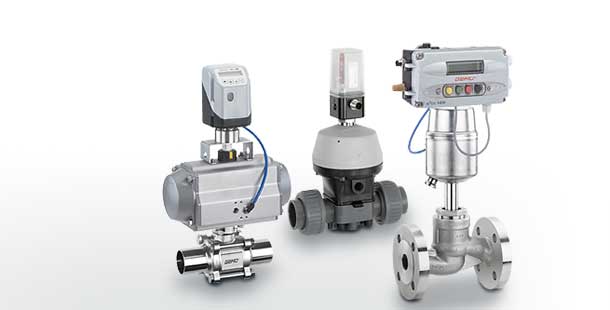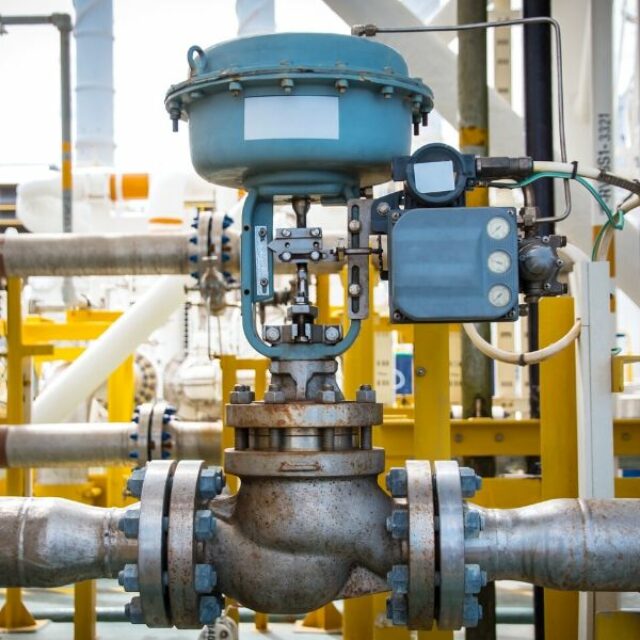Achieve Seamless Integration and Control With Quality Building Automation Controls
In the world of modern structure monitoring, the importance of top quality structure automation controls can not be overemphasized. Accepting high quality building automation controls is not merely a matter of comfort yet a critical essential for companies aiming to optimize their centers' performance and sustainability.

Advancement of Structure Automation Controls
Throughout the previous few years, the advancement of developing automation controls has actually dramatically transformed the means buildings are managed and run. At first, developing automation systems mostly concentrated on basic features such as regulating home heating, ventilation, and air conditioning (HEATING AND COOLING) systems. As technology progressed, these controls have ended up being more advanced, allowing for a larger array of building systems to be incorporated and managed centrally.
The evolution of developing automation controls has seen a shift towards even more intelligent systems that can adapt to transforming problems in real-time. This adaptability is vital for enhancing power performance and guaranteeing owner comfort. Furthermore, contemporary structure automation controls currently provide functions such as predictive maintenance, remote tracking, and information analytics, enabling facility managers to make data-driven choices to boost structure efficiency.

Benefits of High Quality Combination
The innovation in building automation controls towards even more smart systems has actually highlighted the considerable advantages of high quality assimilation in enhancing building procedures and boosting total efficiency. Quality assimilation of building automation controls offers numerous essential benefits. Firstly, it leads to boosted power effectiveness by allowing different systems to collaborate perfectly, making sure optimal performance and lowering power wastage. Top quality integration boosts resident convenience and performance by allowing personalized control over environmental setups like air, lights, and temperature top quality. This customization can cause an extra comfortable and helpful working or living environment. In addition, quality combination streamlines maintenance and fixing procedures, as all systems are adjoined and can be kept track of and controlled from a centralized interface. This central control additionally gives better presence and insights right into structure efficiency, allowing positive upkeep and optimization strategies. In general, the advantages of top quality assimilation in building automation controls are obvious, supplying raised efficiency, comfort, and operational effectiveness.
Enhanced User Experience and Accessibility
Enhancing customer communication with structure automation manages via user-friendly layout and enhanced ease of access raises the overall experience for occupants and facility supervisors alike. By concentrating on user experience, developing automation systems can come to be a lot more easy to use and reliable. Intuitive interfaces, clear navigation, and adjustable setups empower users to connect with the controls conveniently and efficiently.
Accessibility functions play a crucial duty in ensuring that all individuals, consisting of those with specials needs, can use the structure automation controls effortlessly. Including features such as voice commands, tactile buttons, and color-contrasted displays can improve accessibility and make the controls much more comprehensive.
In addition, improved user experience causes greater customer complete satisfaction, raised productivity, and much better decision-making. Owners can readjust environmental settings according to their preferences, while center supervisors can efficiently check and take care of structure systems - control valves. On the whole, focusing on individual experience and ease of access in structure automation manages contributes click for more to a more smooth and effective structure environment for all stakeholders involved
Lasting Practices With Automation

In addition, automation can help with the assimilation of renewable energy resources such as solar panels or wind generators into structure procedures. By instantly changing power use based on the schedule of sustainable power, buildings can better decrease their dependence on non-renewable resources. This seamless assimilation of lasting methods not just profits the atmosphere yet likewise boosts the general operational effectiveness and cost-effectiveness of the structure. With automation, buildings can align with contemporary sustainability objectives and add to a greener future.
Future Trends in Structure Control Equipment
In anticipation of developing and progressing modern technologies sustainability methods, the trajectory of building control systems is poised to accept transformative approaches and innovative solutions. One famous pattern forming the future of structure control systems is the boosted combination of Expert system (AI) and artificial intelligence. These modern technologies make it possible for structures to adjust in real-time to transforming problems, maximizing power consumption and enhancing comfort for occupants. Furthermore, the Web of Points (IoT) is changing building control systems by connecting sensing units and tools to improve and enhance procedures efficiency.
Another crucial trend is visit this web-site the emphasis on cybersecurity actions to secure against potential risks to developing automation systems. As buildings come to be extra interconnected, making certain durable cybersecurity protocols will certainly be necessary to safeguard sensitive information and stop unauthorized accessibility.
In addition, the change in the direction of cloud-based systems is gaining momentum, permitting for centralized control and remote access to building systems. This promotes much easier monitoring, maintenance, and updates, boosting the general efficiency and adaptability of structure control systems. As innovation remains to development, these patterns are expected to form the future landscape of structure automation controls, driving innovation and sustainability in the built setting.
Verdict
Future trends in building control systems are most likely to concentrate on additional improving automation abilities for boosted power performance and general efficiency. It is crucial for building owners and drivers to focus on the fostering of high quality structure automation manages to optimize structure operations and accomplish lasting sustainability objectives.
In the world of modern structure management, the importance of high quality building automation controls can not be overemphasized. Generally, the advancement of structure automation controls proceeds to drive technology in the building management industry, using brand-new possibilities for developing smarter and a lot more sustainable buildings.
The development in structure automation controls towards even more smart systems has actually underscored the significant advantages of high quality assimilation in maximizing structure procedures and enhancing overall effectiveness. On read what he said the whole, prioritizing customer experience and accessibility in building automation manages contributes to a much more seamless and efficient structure setting for all stakeholders involved.
It is vital for structure proprietors and operators to focus on the fostering of high quality building automation controls to enhance building procedures and achieve long-term sustainability objectives. - control valves